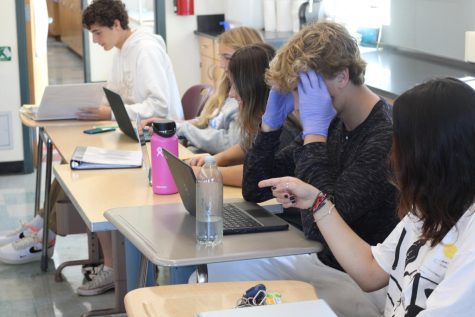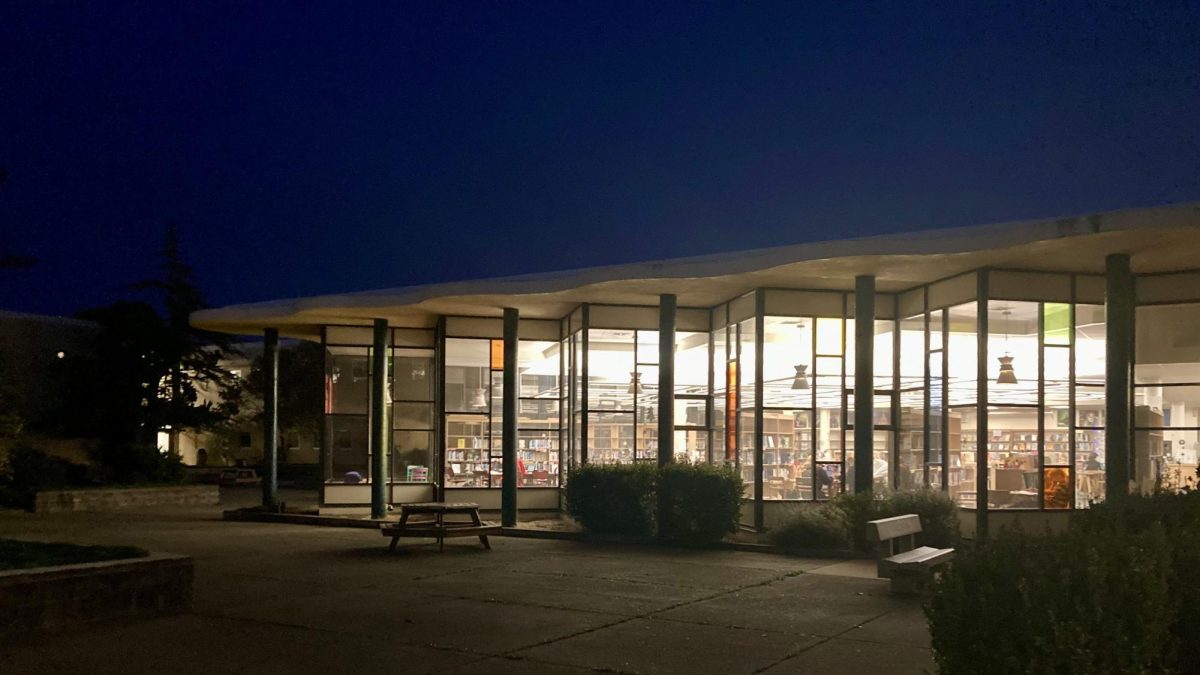Classes overflow despite low enrollment
September 30, 2022
Class sizes have hit an all-time high this fall, disrupting the lives of students and teachers in various negative ways. Despite declining enrollment, certain classrooms are overflowing with students at the same time as the Tamalpais Union High School District (TUHSD) reduced teaching resources for the 2022-2023 school year.
Transfer student Isabelle Landry was looking forward to her first year as an 11th grade student. Her excitement lessened when she found out she was unable to transfer out of her Advanced Placement U.S. History class into a regular history class. Landry’s counselor told her all the classes were too full, and she would not be able to change classes until the second semester.
“It was very frustrating,” Landry said.
Larger class sizes are negatively impacting teachers as well. Advanced Placement Environmental Science teacher Mitch Cohen, who has taught at Redwood for 28 years, explained his average class size is over 34 students this year. Since his classes have proper seats for 30 students, Cohen has students sitting in the back of the classroom without desks.

“I call it the ‘overflow section,’” Cohen said. “That’s the new reality.”
It’s even more challenging when students need to move around his crowded classroom to do science labs. Last year’s class sizes were not as big as this year’s, according to Cohen.
“In my 28 years here, these are by far the biggest classes I’ve had,” Cohen said. “Average classes used to be 26 or 27 students.”
Redwood’s own reporting demonstrates how class sizes have increased since 2018. According to Redwood’s 2021 School Accountability Report Card, English, math, science and social science classes with 33 or more students increased from two in the 2018 school year to 51 this school year.
English instructor Steve Hettleman, a 27-year teacher at Redwood, has five classes and 157 students in total this year, resulting in approximately 31 students per class.
“I think the class size increase is a disaster,” said Hettleman.
He expressed concerns about his ability to give the quality of feedback he would like to his students. Despite growing class sizes, TUHSD has been emphasizing stronger student-teacher relationships as a staff development goal. Those relationships are more difficult than ever for today’s time-constrained teachers.
“The biggest frustration is not being able to give kids the individual attention and feedback they deserve,” Cohen said. “It also makes it a lot more challenging to develop personal relationships with students.”

Cohen expressed disappointment that he is not able to get to know his students as well as he has in the past. Although classes are growing larger, student enrollment is declining. After increasing 26 percent since the 2012 school year, the number of students declined last year for the first time in a decade. This year’s enrollment has continued to decline, and that trend is expected to continue as there have been fewer incoming students than graduating seniors in the last two years, according to TUHSD’s data.
Despite declining enrollment, TUHSD laid off teachers and shortened their hours across the district for the 2022-2023 school year due to budget concerns. The district is concerned about the budget because it anticipates generating a $714,000 deficit in the 2022-2023 school year. But even with this deficit, the district will end the year with a $21.9 million surplus, or a 20 percent reserve. (See in feature “Lack of students or Lack of funds” for more on this topic.)
“Those [teacher layoffs] might make sense in tough budget times, but the district is sitting on a reserve of somewhere around $22 million,” Hettleman said. “The state requires us to keep two percent worth of our budget in reserve.”
According to Principal Barnaby Payne, the most important factors impacting class sizes are the ability of students to take the classes they need to graduate and to be eligible to attend California’s public university system. Maintaining those core class sizes at a reasonable level to enhance learning is the highest priority in scheduling classes. Since it is a lower priority to manage the size of elective classes, such as Honors and Advanced Placement courses, those classes tend to be larger.
“This year, in some of our high-level academic electives, class sizes are pushed to the top of the limit,” Payne said.

With fewer teachers, it’s become more challenging for Redwood’s administrators to satisfy all students’ course requests. District Superintendent Tara Taupier explained to the Marin Independent Journal that recent teacher layoffs were due to uncertainty about compensation in the 2023-24 school year, which had not yet been resolved. Hettleman doesn’t think these layoffs are logical.
“You should only take peoples’ jobs away from them when there’s a budget crisis, and we don’t have a budget crisis,” Hettleman said. “So if they had kept those teachers on throughout the district, class sizes would’ve been lower.”







